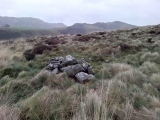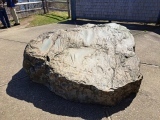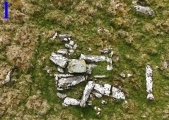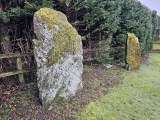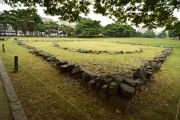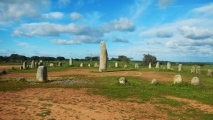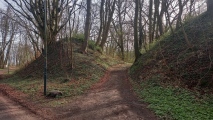Andy Burnham's Blog, page 72
April 10, 2024
Graig Las Cairn 2
Situated within a high marshland to the west of Tyrrau Mawr this cairn shares the immediate area with another cairn about 20m to the NE. A prehistoric settlement lies further to the SW. The cairn is located at the eastern end of a long terrace.
Published on April 10, 2024 11:13
April 9, 2024
Fort Hill Sharpening Stone
The surface of this stone, a very hard fine-grained metamorphic boulder, contains a series of long V-shaped grooves as well as scattered depressions. National Park Service interpretation at the site describes the depressions as areas where Native American tribes sharpened their stone axe blades. The V-shaped grooves, now fairly worn, were used to sharpen bone fish hooks.
Published on April 09, 2024 09:34
April 8, 2024
Hafotty Fach monolith quarry
The site is a large boulder that seems to have been used as the core to extract monoliths. I noticed an 'odd' cairn whilst visiting/photographing the nearby settlement, approx 100m away. On closer inspection the cairn was seen to be a scattering of 6 or 7 stones that look like monoliths, one of which appeared finished - complete with one chisel shaped end - the others all looked to be, at least partially, unfinished.
Published on April 08, 2024 05:44
April 6, 2024
Dowally
Our first photos of these lovely stones between Perth and Pitlochry. A pair of standing stones located by the green garden hedge of the small cottage. Both monoliths are quite impressive slabs up to 230cm and 260cm tall. The western stone has a distinctive vertical quartzite vein. According to existing sources the stones are not in its origin location. They were relocated and rearranged after one was hit by the bus and broken sometimes before 1975.
Published on April 06, 2024 07:40
April 5, 2024
Xunantunich
Xunantunich is a Mayan centre in Cayo District, Western Belize. The structures are dated to the Classic period (300 - 900 CE). Among the structures there is El Castillo, one of the largest known Mayan pyramids. There is evidence that the city was abandoned after an earthquake.
Published on April 05, 2024 10:44
April 4, 2024
Seokchon-dong gobungun
In the south-eastern residential area of Seoul city, a "gobun-gun" (tumulus group) is preserved as a park. Most are thought to have been constructed in the early 4th century during the Baekje kingdom (18BCE?-660CE). Once there seemed to be 66 chambered cairns, but now only the following monuments remain:
Published on April 04, 2024 06:53
Cromeleque do Xarez
One of the few square stone circles (!), in the whole world - or cromlech as the Portuguese call them. Rebuilt in quadrangular form, with 52 small fragmented monoliths of various shapes made out of granite. A huge menhir in the centre about 4 meters tall, also fragmented, which has near its base a set of small carved dimples.
Published on April 04, 2024 06:48
April 3, 2024
Ring-in-the-Mire
See also the 1845 painting of Ring-in-the-Mire on this page. Designated as a site where four parishes converge the Ring-in-the-Mire is an ancient pond where the parishes of Honiton, Sidbury, Gittisham and Farway meet. It is said that Isabella De Fortibus, the 8th Countess of Devon settled the boundaries after a dispute by throwing her ring into the mire, the name has since stuck. The pond was later associated with Farway Castle in Devon
Published on April 03, 2024 13:00
Harolds Stones
Three tall stones stand leaning at all angles in an open field. Their purpose is unknown, and they may once have been part of a larger stone monument, possibly a circle. Although they were said to commemorate a battle won by King Harold, they very likely date from the Bronze Age.
Published on April 03, 2024 06:04
April 1, 2024
Slawenburg Rugard
The Slavic hillfort "Rugard" is located at the highest point on the island of Rügen in Mecklenburg-Western Pomerania. It is a two-part hillfort on the summit of the Rugard, on an area of about 2 hectares. The hillfort was the preferred seat of power for the Ranish elite until 1325.
Published on April 01, 2024 15:12

